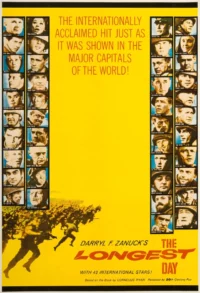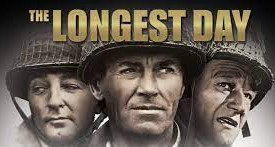 This is the first of Cornelius Ryan’s epic histories to be transferred to the big screen. The Longest Day film from 1962 makes a valiant attempt to deal with the extraordinary scope of Operation Overlord, The D-Day Landings. As well as using Ryan as the scriptwriter filmmakers used several participants from the battle.
This is the first of Cornelius Ryan’s epic histories to be transferred to the big screen. The Longest Day film from 1962 makes a valiant attempt to deal with the extraordinary scope of Operation Overlord, The D-Day Landings. As well as using Ryan as the scriptwriter filmmakers used several participants from the battle. 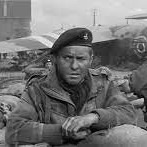
My favourite anecdote of the many that are associated with the making of the film, is that Richard Todd, playing Major Howard, had actually been one of the Parachute Regiment soldiers who helped reinforce Howard’s coup de main force at the bridges.
During the actual battle, Todd relayed information to Howard. This is shown in the film, so technically Todd delivered himself a message. During filming, Todd wore the beret he had worn during the battle, the only difference was a change in cap badge from his original Parachute Regiment wings to the Badge of Howard’s Ox and Bucks.
Synopsis of the film
The Longest Day takes such pro-allied compassions further. Based upon the book written by Cornelius Ryan this film chronologies the largest [amphibious] invasion of all time., the D-Day landings of 6th June 1944. The story begins just prior to the invasion and visits the numerous characters of all ranks at their various military establishments both in France and in Britain as they prepare for the forthcoming battle.
The Seventh Virgin Film Guide has called The Longest Day: “One of the most ambitious films undertaken… [The director] Darryl Zanuck, who spared no expense bringing The Longest Day breathtaking scope and authenticity, going so far as to insist that shooting be done only in conditions that matched those of the actual event… The Longest Day is visually stunning- its extraordinary camera movement and Cinemascope photography brilliantly augmenting the meticulously re-enacted battle scenes… this magnificent film was the most expensive black and white production to its date.”
Why is it called The Longest Day – supposedly?
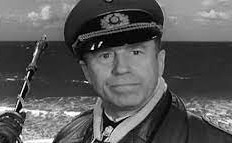
To emphasise the epic nature of the film Zanuck included various speeches by notable commanders from both sides. In the opening scene, whilst overseeing the defensive preparations, Rommel (Werner Hinz) says to his companions:
“How calm and peaceful it is. A strip of water between England and the continent… between the Allies and us. But beyond that peaceful horizon, a monster waits. A coiled spring of men, ships, and planes… straining to be released against us. But not a single invasion may come, gentlemen, I shall destroy the enemy there, at the water’s edge. The first twenty-four hours will be decisive. For the Allies and us, it will be the longest day… the longest day.”
It is around this phrase that the film revolves, a similar theme adopted with a later film adaption of a subsequent Cornelius Ryan book, A Bridge Too Far. John Wayne’s character, Colonel Vandervoort of the American 82nd Airborne Division continues the sentiments begun by Rommel as he encourages his men prior to their take off with the almost Churchillian speech: “We are on the threshold of the most crucial day of our lives.
How realistic is it?
As with many of the films of this earlier era, the action sequences often seem stilted. Many of the scenes in the film seem particularly choreographed; there is no feeling of the real chaos and disorder that soldiers encountered on the day of the feelings which Steven Spielberg tries to convey in 1998’s Saving Private Ryan. As a result, the film lacks realism.
The film’s major premise was not the realistic portrayal of the invasion but rather a proclamation of the glory of such a historically significant event. The story does not delve too deeply into the personalities of the numerous characters involved and their personal battles but concentrates on the grand overview. The sheer scale of the film does not allow such in-depth studies.
The film essentially glorifies the battle by not dwelling overly much on chaos, injury or death. In this way, the film attempts to glorify the achievements of Operation Overlord. Since the film concentrates on the large scale of the battle, many of the major characters in it are the directors of the events themselves, the high-ranking officers. Any inclusion of lower ranks is ironically portrayed in a light-hearted manner so as not to bring the viewer away from the true seriousness of war.
How does it fit with other films?
The Longest Day maintains, to a certain extent, the various racial stereotypes found in the earliest Second World War propaganda films such as The 49th Parallel. The British are stoically stiff-upper-lipped, and the Americans are brashly boyish. The film has been criticised as treating the German characters much more sympathetically than they had in earlier films, the way that this is achieved is by refusing to taint every German character with Nazism, but they are still depicted as being arrogantly confident.
The 2000 Film and Video Guide called The Longest Day, “one of the last great epic World War II films.” In agreement with this, there has been no film since which has dealt with the great extent of the battle on such a scale. Zanuck went to pedantic lengths like Spielberg would go to over thirty years later with his two epic Second World War films.
Amongst its contemporaries in this earlier period, the film was undoubtedly the epic that Matlin [editor of the 2000 Film and Video Guide] contends but at the turn of the twenty-first century, it seems to lack the graphic authenticity of later films, films that no longer want to glorify the pursuit of war.
The era in which the film was produced is re-iterated by the maintenance of nationalistic stereotypes that are included within it, even if they are slightly more sympathetic in dealing with the enemy. Germany, the old enemy, by 1962, had been rebuilt and included within NATO which includes many of its former enemies, to face the current enemy, the Soviet Union.
The next film instalment will be The Great Escape.
Aged actors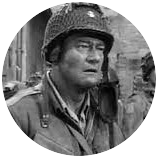
One of the most prominent bones of contention about the film is that several of the actors were significantly older than the real characters they played. For example, John Wayne was 54 playing a 27-year-old Lieutenant-Colonel Vandervoort.
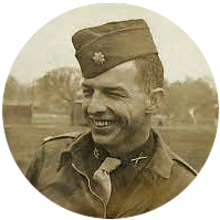 What do you lot think?
What do you lot think?
